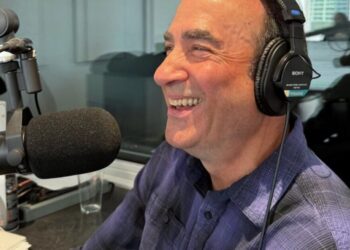President Donald Trump’s bid Friday to soothe consumers by dropping tariffs on a wide array of groceries, including coffee, beef, bananas and tomatoes — contradicting his repeated claims that the levies were not affecting retail prices — shows he is on the defensive over his signature policy initiative.
Public opposition, eroding support on Capitol Hill and a potentially lethal challenge before the Supreme Court have Trump scrambling to defend his economic strategy even as the administration notches diplomatic agreements that are cementing its high-tariff approach to rebalancing global trade.
President Donald Trump’s bid Friday to soothe consumers by dropping tariffs on a wide array of groceries, including coffee, beef, bananas and tomatoes — contradicting his repeated claims that the levies were not affecting retail prices — shows he is on the defensive over his signature policy initiative.
Public opposition, eroding support on Capitol Hill and a potentially lethal challenge before the Supreme Court have Trump scrambling to defend his economic strategy even as the administration notches diplomatic agreements that are cementing its high-tariff approach to rebalancing global trade.
Public opinion is the immediate worry, following recent Democratic electoral victories in Virginia and New Jersey that were fueled by Americans’ ire over the cost of living. By a nearly 2-to-1 margin, registered voters disapproved of the president’s tariffs in a recent Washington Post-ABC News-Ipsos poll, a finding that has been consistent all year and could imperil Republican candidates in next year’s congressional elections.
The president on Friday issued an executive order rolling back import taxes on many foods, his most significant retreat on the emergency tariffs he imposed in April, which were billed at the time as loophole-free. In September, the White House had signaled that some products that are not generally produced in the United States could be spared tariffs once nations where they originate reached trade deals with the United States. But Friday’s exemptions apply to products from any nation, even those that have not agreed on trade terms.
“They know that they shouldn’t have imposed a lot of these tariffs and that they’re hurting affordability for consumers. Now they’re looking for a way to justify lowering them. And that’s fine. But did we really need to go through all this in the first place?” said Christopher Padilla, senior adviser to the Brunswick Group and a former trade official in the George W. Bush administration.
The president’s broader order came one day after Trump aides said they were eliminating tariffs on select goods, including coffee, from Argentina, Ecuador, Guatemala and El Salvador that are not produced in significant quantities in the United States. Those tariff exemptions came via trade frameworks negotiated with each country, said an administration official who briefed reporters and could not be identified under ground rules set by the White House.
This week’s tariff cuts appear aimed at responding to public concern over high prices. Inflation overall is running at an annual rate of 3 percent, above the Federal Reserve’s 2 percent target for price stability but well down from the mid-2022 peak of 9.1 percent.
Prices on many everyday items, however, continue to soar. Through September, the most recent data available, coffee prices were up 19 percent over the previous 12 months, according to the Bureau of Labor Statistics. Bananas were up 7 percent.
Treasury Secretary Scott Bessent told “Fox & Friends” on Wednesday that tariff cuts would “bring the prices down very quickly.” Bessent previously has said that foreign exporters and U.S. retailers were bearing most of the tariff burden, leaving consumers mostly unscathed.
A White House spokesman said the president was pursuing “a nimble, nuanced, and multifaceted strategy” on trade.
“President Trump’s tariffs are leveling the playing field for American workers and securing trillions in investments,” said spokesman Kush Desai.
In less than a year, Trump has almost doubled the average tariff on Chinese goods to 47 percent, secured promises of more than $1 trillion in foreign investment and begun erecting protectionist barriers around major swaths of the U.S. economy. Compared with the orthodox economics that held sway for decades after 1945, he has charted an entirely new course.
Now under pressure from voters, shifts are coming.
“It is a bit of a turning point, and I thought it would be that at some point, he would get his agenda pretty well locked in, which I think he has on trade, and then you’d see kind of a modulation over time,” said Everett Eissenstat, a trade expert who worked in the White House during the first Trump administration and is now with Squire Patton Boggs. “His goals were pretty well set at the front, and I think he’s hit them.”
U.S. negotiators have secured several tentative trade agreements, known as “framework” deals, including the deals announced this week and earlier pacts with the United Kingdom, European Union, Japan, South Korea and Vietnam. Their objective is to shrink the U.S. trade deficit, which has continued to expand on Trump’s watch, according to administration officials.
The agreements generally require other nations to lower their barriers to Made-in-the-USA products while accepting U.S. tariffs of 10 percent or 15 percent on their shipments to American customers. Several countries, including Malaysia and Cambodia, have also agreed to mirror U.S. trade rules that are adopted for national security reasons, a notable development seen as being aimed at China.
“It’s all been extremely ad hoc. But the Southeast Asia deals are really substantive and could help U.S. exporters. These are big changes,” said Edward Alden, a senior fellow at the Council on Foreign Relations.
But the protectionist turn has yet to pay off for the factory sector the president seeks to promote. Since January, 33,000 manufacturing jobs have disappeared even as overall employment has grown. The factory sector also accounts for a smaller share of the U.S. economy today than it did when Trump was inaugurated in January.
Improvement will come next year, which will be a “blockbuster,” Bessent told Fox Business.
In another move to assuage voters’ economic worries, the president this month revived talk of a $2,000 taxpayer rebate funded by tariff revenue, which he first mentioned this summer.
“A dividend of at least $2000 a person (not including high income people!) will be paid to everyone,” Trump wrote in a Nov. 9 post on his social media site, Truth Social.
But the administration to date has not developed a formal refund proposal, and the president’s allies in Congress, which must approve any such plan, are cool to the idea.
Having effectively conceded that tariffs are contributing to high prices, the administration has opened the door to demands for further modifications in its strategy, said Ed Gresser, vice president at the Progressive Policy Institute in Washington.
U.S. importers this year have paid far more in tariffs on a wide range of consumer products, including automobiles, vacuum cleaners and makeup, Gresser said. Tariffs on imported coffee have cost Americans $358 million so far this year, up from $1.3 million last year, according to U.S. International Trade Commission data.
But tariffs on automobiles have cost more than 36 times as much — amounting to $13 billion.
“There is a heavy price for this policy, and families are paying a lot of it,” said Gresser, who was a trade official in the first Trump administration.
Discontent over Trump’s bare-knuckled trade offensive also is simmering on Capitol Hill. At the end of October, the Senate voted three times in as many days to reject elements of the president’s tariff strategy, including his declaration of a national emergency over the chronic U.S. trade deficit.
Each time, four Republican senators — Mitch McConnell and Rand Paul of Kentucky, Susan Collins of Maine and Lisa Murkowski of Alaska — joined Democrats in a 51-47 mostly symbolic rebuke. The GOP-controlled House has adopted rules that prevent consideration of any legislation to roll back Trump’s tariffs until January.
While public opinion is a White House concern, the real threat to the president’s trade strategy comes from the Supreme Court.
The justices heard arguments Nov. 5 in a dispute over the president’s invocation of a 1977 law to impose tariffs aimed at curbing illicit shipments of fentanyl and higher “reciprocal” tariffs on goods from dozens of U.S. trading partners.
If the court upholds the three lower-court rulings that largely invalidated the tariffs, Trump’s strategy would be upended. The government could be ordered to refund some or all of the $90 billion it has collected via the tariffs while the president falls back on other legal authorities to replace the duties with similar measures.
“If the Supreme Court takes away all or some of the IEEPA authority, then it will be a very different power dynamic for the Trump presidency,” said Lori Wallach, director of Rethink Trade at the American Economic Liberties Project.
One option would be to dust off Section 338 of a 1930 trade law, which permits the president to impose tariffs of up to 50 percent on goods from any nation that he determines “discriminates” against U.S. goods. While no president has ever invoked that provision, resolving any legal challenge would probably take a year, Wallach said.
The post Trump plays defense on tariffs as Americans face rising food prices
appeared first on Washington Post.




